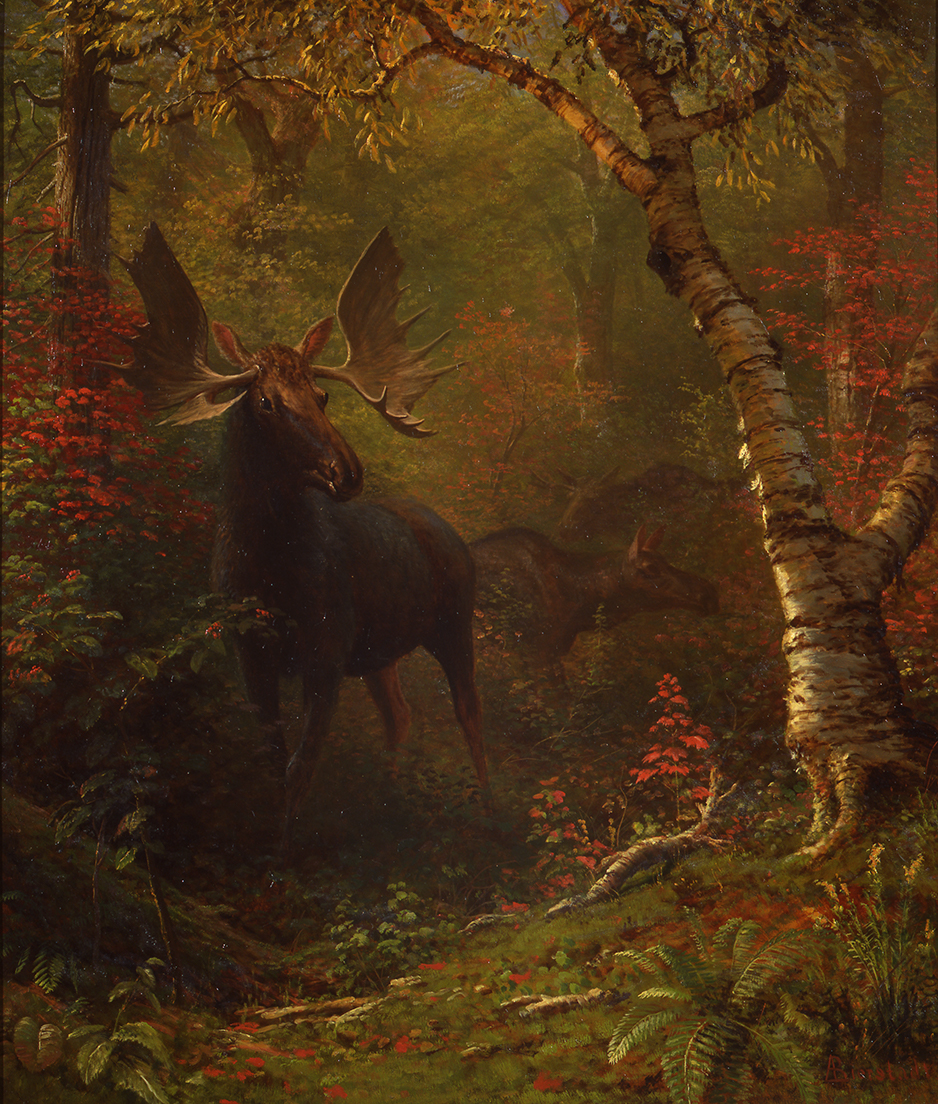This painting is a reminder that Bierstadt did not limit his production to landscapes. On his travels he did numerous studies of wild animals, and beginning in the late 1870s, he sometimes made them the chief subject of his paintings. Such works link him to Rosa Bonheur, Sir Edwin Landseer (1802-1873), and other important nineteenth-century animal painters.
Moose was probably painted after 1880, since the foremost animal seems to be based on the bull shot by the artist on the Maine border that year. Proud of having stalked and killed the bull moose with the eighth-largest antlers in sporting history, Bierstadt had the head stuffed and mounted on the wall of his studio.
In this painting the artist seems keen to emphasize the nobility of the forest beasts. The bull poses regally, imitating the stag in Landseer’s exceedingly famous Monarch of the Glen (1851), as he moves from shadow into sunlight. The soft glow forms a halo behind the spectacular antlers and, for greater realism, shines through the ears. The three-quarter viewpoint subordinates the most ungainly features of the moose-its heavy muzzle, hanging dewlap, and hump at its shoulders. The legs and body are made more slender, but the head is characteristically long.
Although the artist has ennobled the bull moose, this painting also demonstrates his considerable anatomical knowledge of this large ungulate. He distinguishes between the adult male’s typical palmate antlers and the spikes of the yearling depicted behind him. The cow exhibits an awkward profile with fleshy nose and hump, although Bierstadt neglected to include its dewlap, or “bell.” He places the animals appropriately in a forest setting, a natural habitat of the moose, and features in the foreground a white birch, whose twigs and bark are a staple of the animal’s diet. He created a soft lighting, for this shy creature is usually most active at dawn and dusk. The sprinkling of red leaves indicates an autumnal season consistent with the fully developed antlers of the bull, which sprout in April and are shed in December or January.
At the time this work was painted, the moose was nearing extinction in the United States from over-hunting. By the mid-1890s, there was finally a public outcry to save these rapidly declining game animals. It is ironic that Bierstadt as a hunter contributed to their drastic decline, while as a painter he celebrated them as natural inhabitants of the American wilderness.
NOTE: Bierstadt gave the antlers of the bull that he shot to the New York Zoological Society, which sent them on to the Boston Museum of Science.


